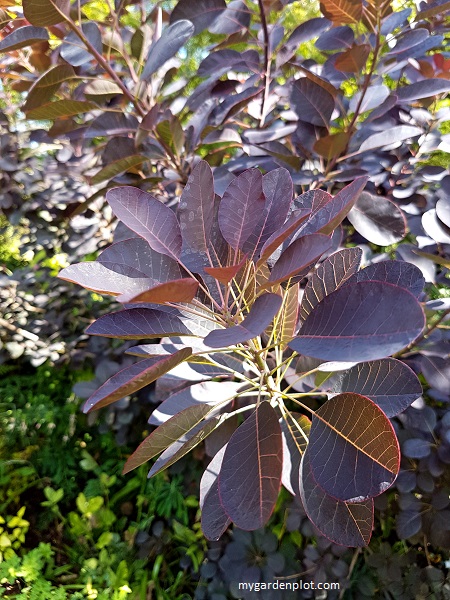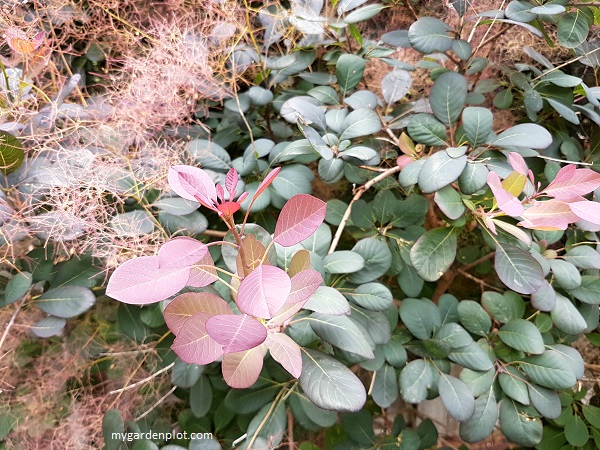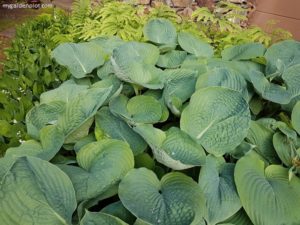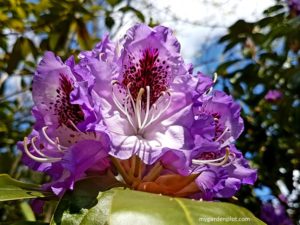Cotinus coggygria: Smoketree, Smoke Bush Or Wig Tree
The Cotinus coggygria Smoketree (or Smoke Tree) is really a shrub, not a tree. It is also commonly referred to as Smoke Bush or Wig Tree. It is a deciduous shrub that can get as tall as 6 metres (20 feet). Its natural habit is round and bushy. Suitable for any garden size, the smoketree is easy to prune and maintain to a manageable size either as a dwarf shrubby plant, kept as a medium-sized shrub or train as a small tree with a single stem. Growing and pruning the smoketree to look like a tree is popular with gardeners. The smoketree or smoke bush names come from the textural smoky appearance of puffy clouds made of a cluster of tiny flowers emerging early summer. These puffs of flower ‘smoke’ adorn the tree through to late summer. It is an attractive shrub (or tree) that is easy to grow and care for. The hardy smoketree grows in zones 4 to 9. As an accent deciduous plant with changing foliage colour, it looks attractive in a mixed summer garden border with evergreens.
The foliage from spring to fall changes colours adding contrast and interest. It especially looks beautiful with a pink or purple clematis vine flowering through it. The purple-green foliage with plum-shaped leaves turn red, orange and purple in autumn (fall). It can also be used with container gardening. Its roots adapt to the container restrictions, similar to the weeping Japanese maple tree, and looks fabulous in a large ceramic pot.
The smoketree is native to North America, southern Europe and Asia. Though not listed as poisonous, contact with sensitive skin may cause dermatitis.
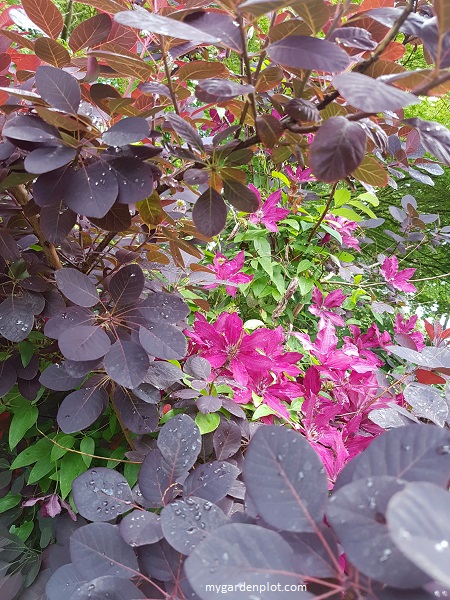
Where To Plant And How To Grow Smoketree / Smoke Bush
The smoketree thrives in a sunny or part sunny site. It is a low maintenance plant. It tolerates most soil types but grows best in well-drained, fertile, humus-rich soil that is moist. Due to this versatility, smoketrees can be planted in rocky coastal soils. So long at the location is free-draining and with sun, the smoketree will do well.
Add rich organic compost every spring or top-dress with a mix of slow-release fertilizer. Once established, water moderately.
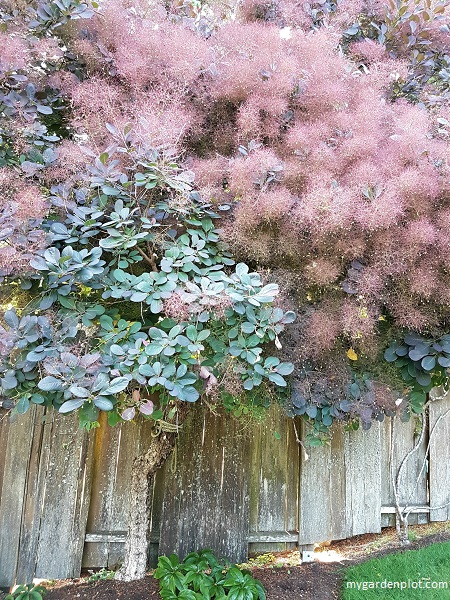
RELATED TOPIC: Buyer’s Guide On How To Choose Hand Pruners (Secateurs)
How To Prune Smoketree / Smoke Bush
If allowing the smoketree to grow into its natural habit, no pruning is necessary. With the exception, of course, of removing any deadwood or damaged stems in spring. Any routine pruning to remove straggly or overcrowding should also be done in spring. It is best to keep remedial pruning for mature smoketrees be done over two years rather than in one session.
It grows moderately fast, and if you wish to contain the smoketree as a low shrub, it can be cut right back to the ground in early spring.
The smoketree responds to hard pruning with larger leaves and a renewed vigour for foliage effect if this is the primary interest. However, to flower well, less pruning is recommended.
Tools Needed For Pruning Smoketree / Smoke Bush
Below is the list of essential tools needed to prune a smoke tree:
- Pruners – Bypass pruners are the most popular choice for gardeners and a must in a pruner’s tool kit. Bypass means the blades pass each other in a scissorlike action providing a clean cut without splintering the stem’s edge. The anvil-type pruner, where the upper blade cuts against a lower flat edge, must always be kept sharp. Otherwise, it will crush the stem while trying to cut it. Pole pruners are also very handy to have especially when taller pruning trees without a ladder.
- Long-handled Loppers – These are similar to pruners but with long handles. Loppers are heavy-duty and great for harder to reach stems that may also be too thick for pruners. Shop for an extendable lopper for the extra reach.
- Pruning Saw – Saws are useful for thick stems that are growing close together. A Grecian saw or Japanese-blade pruning saw is a handsaw with a curved or straight edge that works with a pull-stroke action. Great for those stems that pruners and loppers can’t cut. It will need a protective case. We also recommend a folding hand saw with a pull-stroke action for smaller gardens. It looks similar to a large pocket knife and works in the same manner as a Grecian saw.
- Garden Gloves – Gardening gloves help keep hands clean and provide protection. Fabric gloves with vinyl offer a good grip on the fingers and palm. Good for warmer weather. For more challenging jobs, a pair of suede or leather gloves go a long way. Not too comfortable in warmer weather, though.
RELATED TOPIC: Buyer’s Guide On How To Choose A Pruning Saw
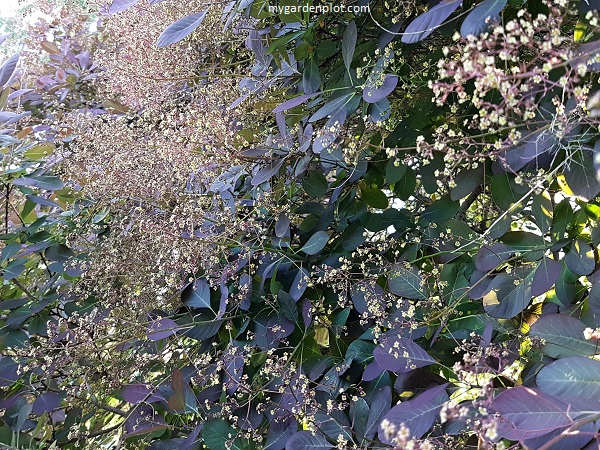
Plant Recommendations
Popular Cotinus coggygria and cultivars include the ‘Royal Purple’ or ‘Purple Smoketree’ for its dark purple foliage that turns red in autumn. The C. ‘Flame’ is a smaller bushy shrub with purple-pink flower clusters and leaves that give a fiery display of reds and oranges in autumn.
Pests And Diseases That Affect Smoketree / Smoke Bush
The smoketree is generally trouble-free. And indeed, it is deer resistant. Occasionally the smoketree can be affected by powdery mildew or verticillium wilt in the Pacific Northwest. The most important concern should be that it should not be planted in very wet soils that could cause root rot. To ensure this does not happen, good drainage is essential.
Propagating Smoketree / Smoke Bush
